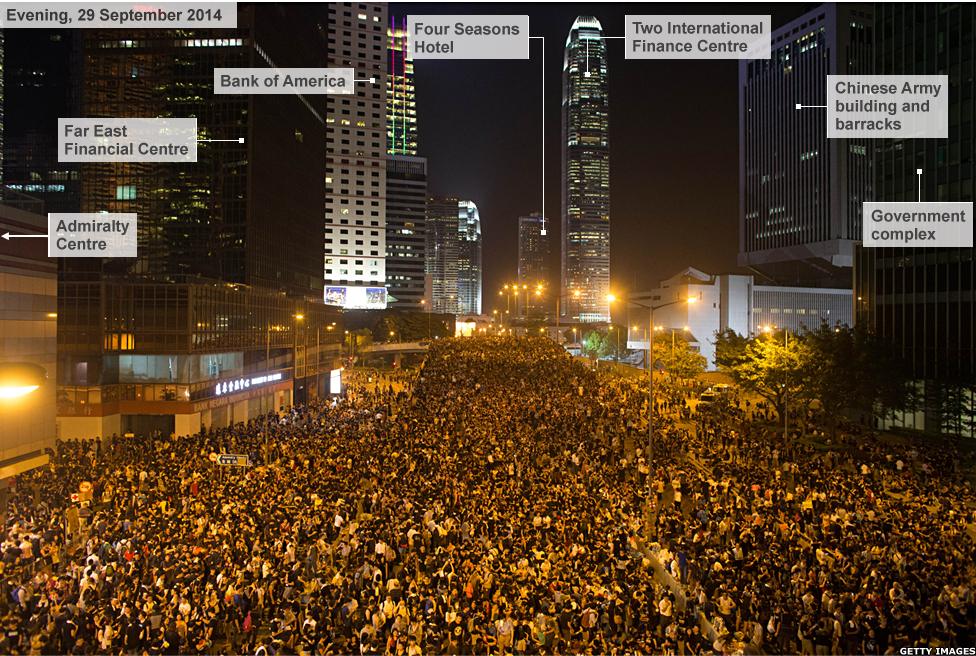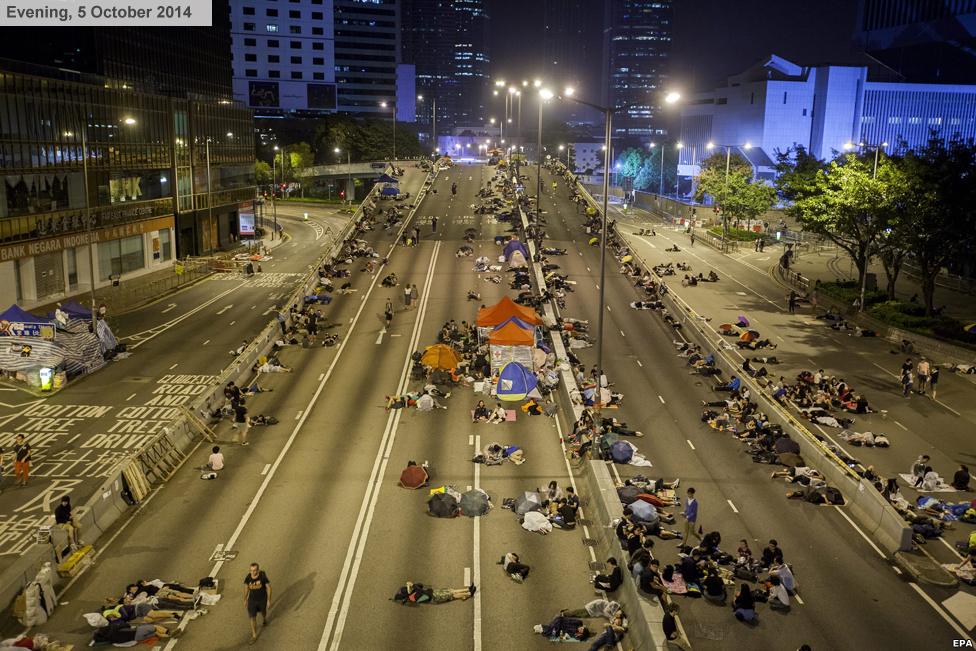Hong Kong protests: Mapping the crowds
- Published
The number of protesters taking to the streets in central Hong Kong has started to drop away a week after the demonstrations were at their height.
Tens of thousands of people had been turning out for the rallies against the Chinese government's decision to limit candidates in forthcoming leadership elections, bringing parts of the territory to a standstill.
But as student leaders started meeting government officials to lay the groundwork for talks on political reform, the protesters out on the streets are in their hundreds, not thousands.
Connaught Road, central Hong Kong

On Sunday 29 September, Occupy Central joined forces with students who had been staging boycotts and sit-ins to demand democracy. Their occupation of the business district began.
Key parts of the city were blocked by protesters - a mix of students, supporters of the civil disobedience movement Occupy Central , externaland those angered by the initial police response to the protests. Some schools and banks closed.
But a week later, the number of those returning for the evening protests started to dwindle.

Location of the protests

Those taking to the streets have been described by some as "the politest protesters", with many demonstrators taking the time to clean up after themselves - removing rubbish and picking up cigarette butts and plastic bottles.
Crowds swelled ahead of Chinese National Day on 1 October - a holiday marking the founding of Communist China.